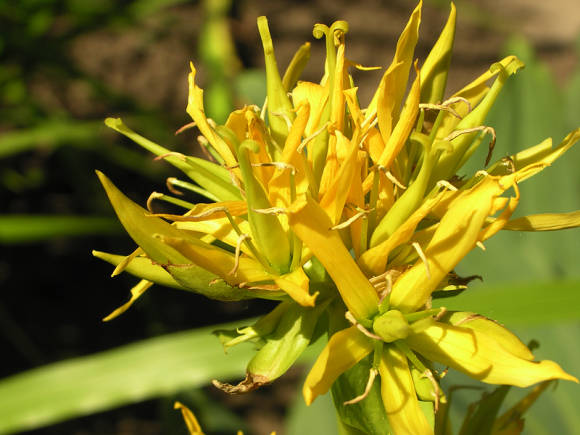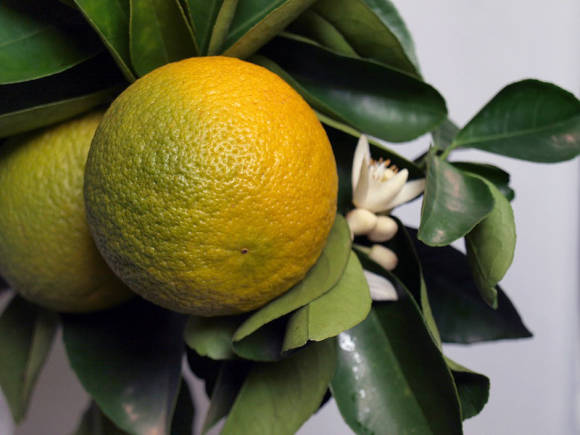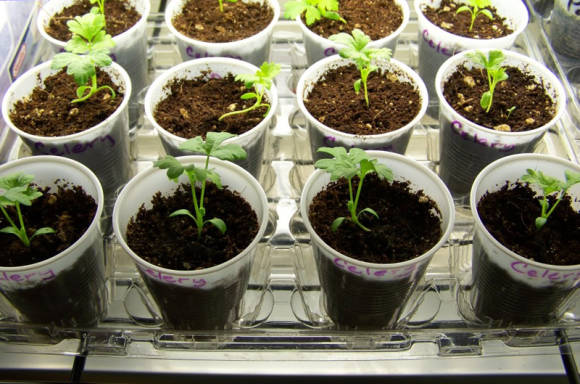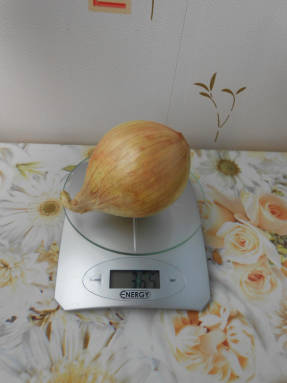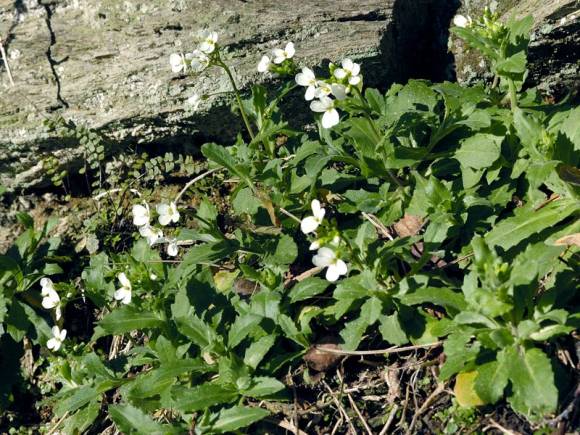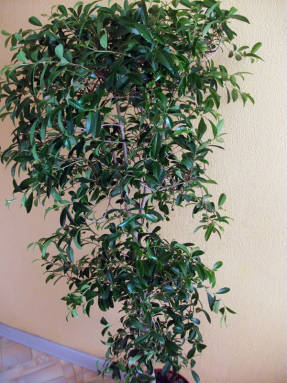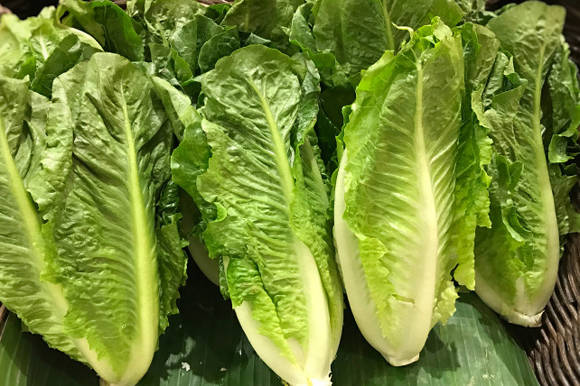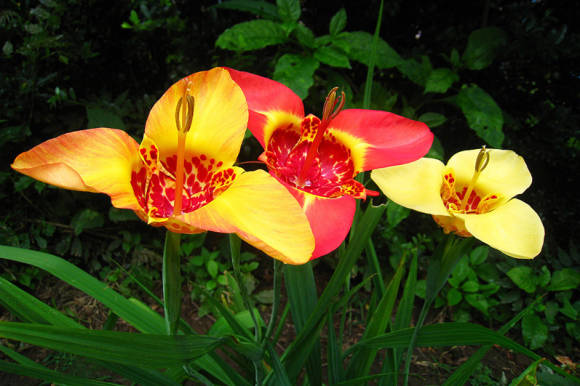Snakehead moldavian (Dracocephalum moldavicum) among gardeners it is better known not as an ornamental, but as an annual spicy-aromatic plant. In the wild in Russia, it grows on the rocky and gravel slopes of eastern Altai and in Siberia. This harmless plant got its formidable name for the shape of the corolla of flowers that resemble the head of a rattlesnake.
 |
Snakehead flowers resemble the head of a rattlesnake |
This plant has spicy and medicinal properties. The entire aerial part of the plant contains essential oils (up to 0.08%). The main component of the oil is citral aldehyde, which gives the greens a delicate lemon scent and spicy taste. Snakehead is a wonderful honey plant, if you have at least a few bushes, not a single bee will fly past your site.
Snakehead is an annual herb from the family of lamipods (Lamiaceae), or labiate, with an erect tetrahedral branched stem up to 70 cm high and numerous upward-directed shoots. The stem is green or purple-red pigmented.
Leaves on short petioles, oblong, toothed. The upper leaves are green, with a reddish-purple tint, the lower ones are dark green. The plant has a taproot and highly branched root.
White or pale purple flowers are collected in sparse racemose inflorescences on the main stem and side branches. Flowering is very extended - from June to August. It starts from the lower flowers and gradually moves to the upper ones. Seed ripening is non-simultaneous.
Snakehead is a cold-resistant, early ripening, plastic plant that is not demanding on growing conditions. Its seeds germinate at a temperature of 5-7 degrees. Its seedlings tolerate frosts down to -2 ° C and prolonged temperature drops.
The snakehead is completely unpretentious, it will grow in partial shade and in the sun. He loves moisture, but does not tolerate its excess, is not affected by pests and diseases.
The plant is undemanding to the soil, but on fertile crops the yield is much higher. Prefers neutral soil reaction. During the autumn preparation, the soil is dug up onto the bayonet of a shovel and a complete mineral fertilizer is applied at 1–1.5 tbsp. spoons per 1 square meter, and organic fertilizers should be applied only under the previous crop.
Sowing the snakehead is carried out in moist soil as early as possible in the spring. On light soils, it is sown on a flat surface, and on medium loamy and heavy soils, it is better in the beds. Sow it in rows to a depth of 2 cm with a row spacing of up to 40 cm. Sowing is done with dry seeds, after sowing the soil is slightly compacted.
Seeds begin to germinate at a temperature of 5–7 ° C, seedlings appear in 10–15 days. When thickened, they are thinned out in the phase of 2-3 true leaves, leaving at a distance of 10 cm from each other. Seedlings and adult plants endure long cold snaps. Only at the beginning of its growth does the snakehead make demands on moisture, and after flowering it tolerates its lack well.
Young plants develop very slowly at first. Therefore, the first weeding and cultivation of row spacings is carried out immediately after the emergence of shoots. The second weeding is carried out when the plants reach a height of 12–15 cm. In the future, well-developing plants themselves will drown out all weeds.
Caring for the snakehead is usual: loosening, weeding, watering. After the formation of two true leaves, the seedlings are thinned out, leaving 15–20 cm between the plants. To obtain a high yield of greenery per season, it is necessary to do 2–3 watering, followed by loosening the row spacings.
 |
Snakehead is a very ornamental plant |
Snakehead is the most unpretentious plant among fragrant herbs, it can be sown twice a summer, which allows you to collect a large mass of greenery from a small garden bed.
Snakehead is often sown before winter to obtain early production.For this, the soil is prepared in the fall and mineral fertilizers are applied. Sowing seeds is carried out in late autumn, before the onset of a stable cold snap, so that the seeds do not have time to germinate in the fall. Then this bed must be mulched with peat chips.
They start harvesting greenery and young shoots in early July during the beginning of mass flowering. Plants need to be cut at the main foliage line, as the lower parts of the stems and branches contain very little essential oil. You can only cut the leaves by repeating this operation many times.
The cut greens are tied in sheaves or laid out in a thin layer, first slightly dried, and then dried under a canopy or in a well-ventilated room at a temperature not exceeding 40 ° C. The aroma of dry leaves is significantly enhanced after 2–3 weeks of storage in a tightly closed container.
Several of the most powerful plants can be left on the seeds. They ripen in early September. Seed plants are cut when the seeds are ripe at the bottom.
Snakehead is easy to grow at home in winter. The seeds are soaked for 24 hours, germinated and sown in boxes with a nutrient mixture with a row spacing of 5–6 cm. After the emergence of all shoots, they are thinned at a distance of up to 10 cm from each other. In the future, on the remaining plants, the leaves are cut off as needed.
Caring for it consists in regular watering and feeding with nitrophoska solution once a month (2 grams per 1 liter of water).
In recent years, the first breeding varieties of the snakehead have appeared in specialized stores, which are much more productive than its local forms:
Arhat - mid-season variety. From germination to the beginning of flowering, 75 days pass. The plant is compact, slightly lodging, 50-60 cm high with a green stem and white flowers. Plant weight up to 260 g. It has a very high aroma resistance when the plants are dried.
Gorgon - early ripening variety. From germination to the beginning of flowering, 50 days pass. Initially, a semi-raised compact rosette of medium-sized, green leaves with a violet shade on short petioles develops, then shoots up to 60 cm high. The flowers of the plant are blue-violet. The mass of one plant is up to 250 grams.
Gorynych - mid-season variety. From germination to the beginning of flowering, 60 days pass. Dark green leaves are collected in a closed rosette. The flowers are large, pale purple. The mass of one plant is up to 240 grams. The aroma is tart, peppery.
Snakehead in folk medicine
 |
Snakehead Moldavian Album |
The snakehead herb is widely used in folk medicine. For medicinal purposes, the herb is harvested at the beginning of flowering early in the morning by cutting off the top of the plant. Dried herb also has healing properties.
In folk medicine, an infusion of snakehead herb is widely used as an analgesic for headaches and toothaches, heart palpitations, colds, gastrointestinal diseases, as a sedative, for neuralgia, migraines.
For the preparation of infusion 1 tbsp. a spoonful of chopped dry greens should be poured with 1 cup of boiling water, insist in a warm place for 10-15 minutes, drain. Take 1 tbsp. spoon 3-4 times a day 15 minutes before meals.
In case of rheumatism and bruises, a compress of herbal mass is applied to the sore spot, and in case of inflammation of the oral mucosa, rinse the mouth with an infusion of grass. The snakehead also helps with toothache. Fresh crushed leaves accelerate the healing of festering wounds.
The spicy greens of the snakehead are widely used in cooking. It stimulates the appetite and enhances the digestive process. Its fresh and dried leaves are added to fresh salads, soups, meat and fish dishes, and spicy sauces. The snakehead gives them all a piquant aroma.
It is better to put the snakehead leaves in the soup 2-3 minutes before serving, and add the dry sifted seasoning to the first and second courses directly on the plates along with other spices. The aroma of dry leaves is enhanced after 2–3 weeks of storage in a tightly closed glass jar.
You can prepare a very aromatic bouquet of herbs that replaces black and allspice. This spicy mixture includes snakehead, mint, tarragon, basil, catnip, lovage, parsley, dill (to taste), and for lovers of spicy mixtures, you can add ground dry garlic and ground red (black) pepper for spice.
When preserving cucumbers and tomatoes, instead of mint or lemon balm, you can put snakehead leaves in jars as a flavoring agent. Its leaves are used in the preparation of compotes from apples, jams, marmalades, jellies, juices, in the preparation of kvass, or as an addition to the tea collection.
Cm. Fruit and honey cocktail with snakehead, Vinegar from snakehead and lavender, Drink with honey, snakehead and cranberry juice, Moldovan pies with cabbage (versere), Spicy vinegar from snakehead and shallots, Summer creamy fruit cocktail with snakehead.
Finally, a snakehead and an ornamental plant. For flower growers, the main advantage of this plant is in its flowers, collected in numerous long brushes, abundantly covering the entire plant from the beginning of July to the end of August. And its oblong, medium-sized, dark green leaves set off these inflorescences well. Therefore, the snakehead is planted in small groups in various types of flower beds, including rockeries and near lawns. In addition, very beautiful high curbs are obtained from it.
